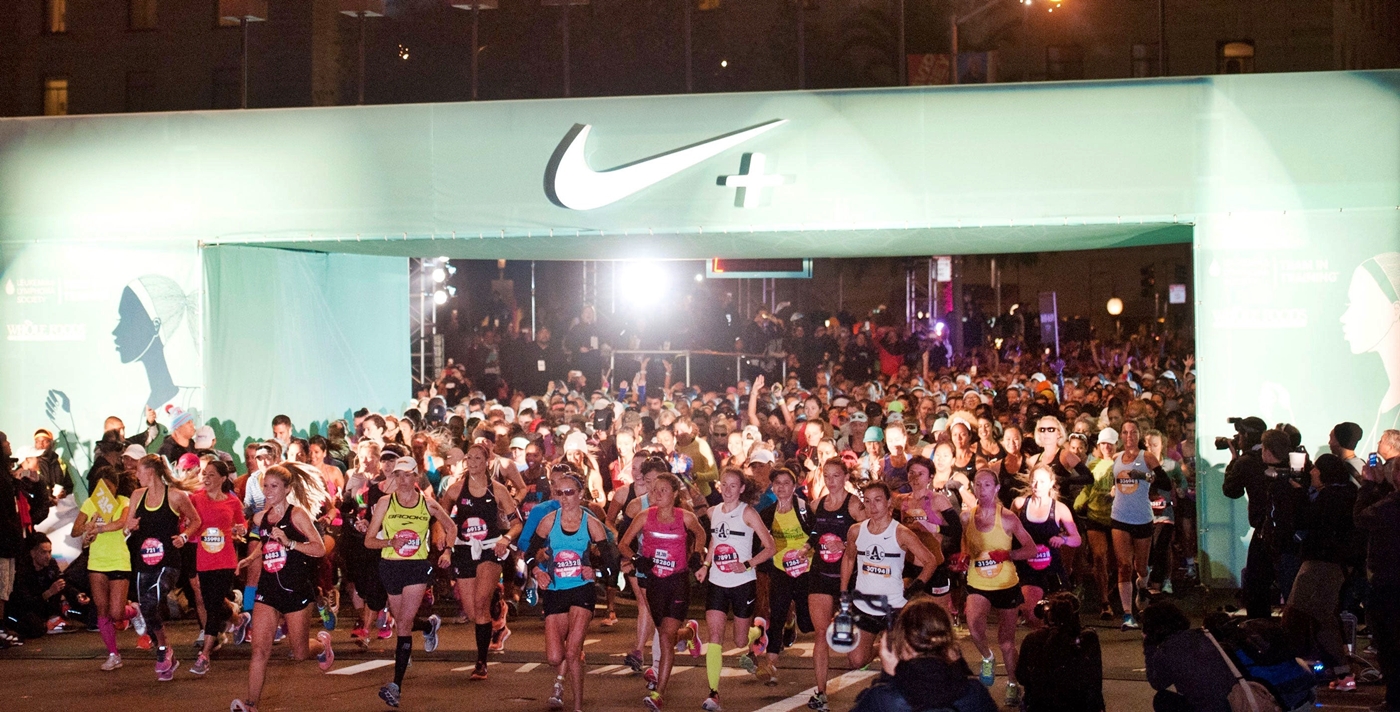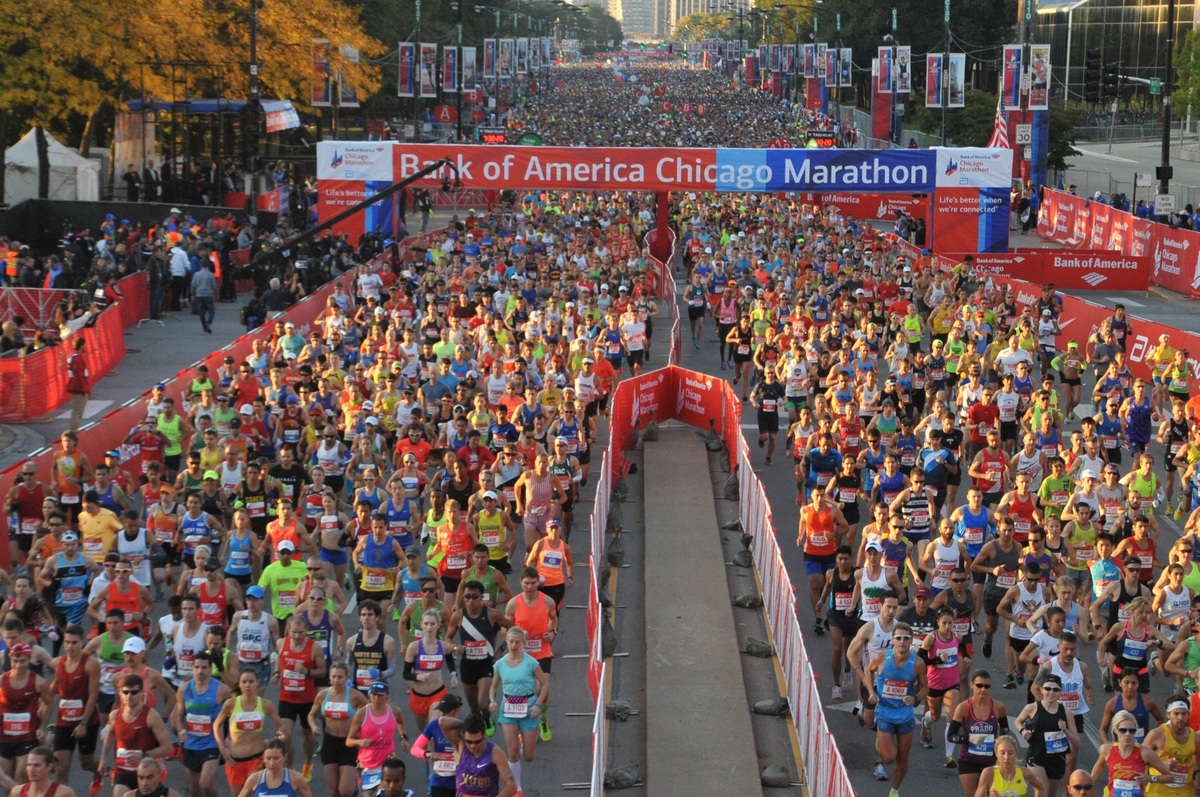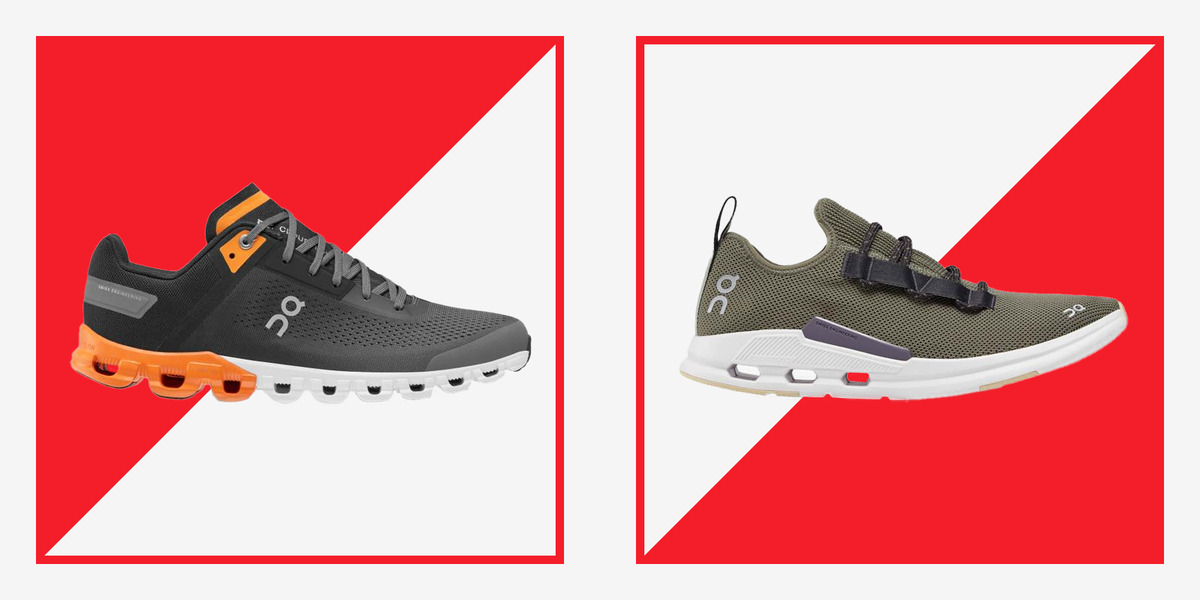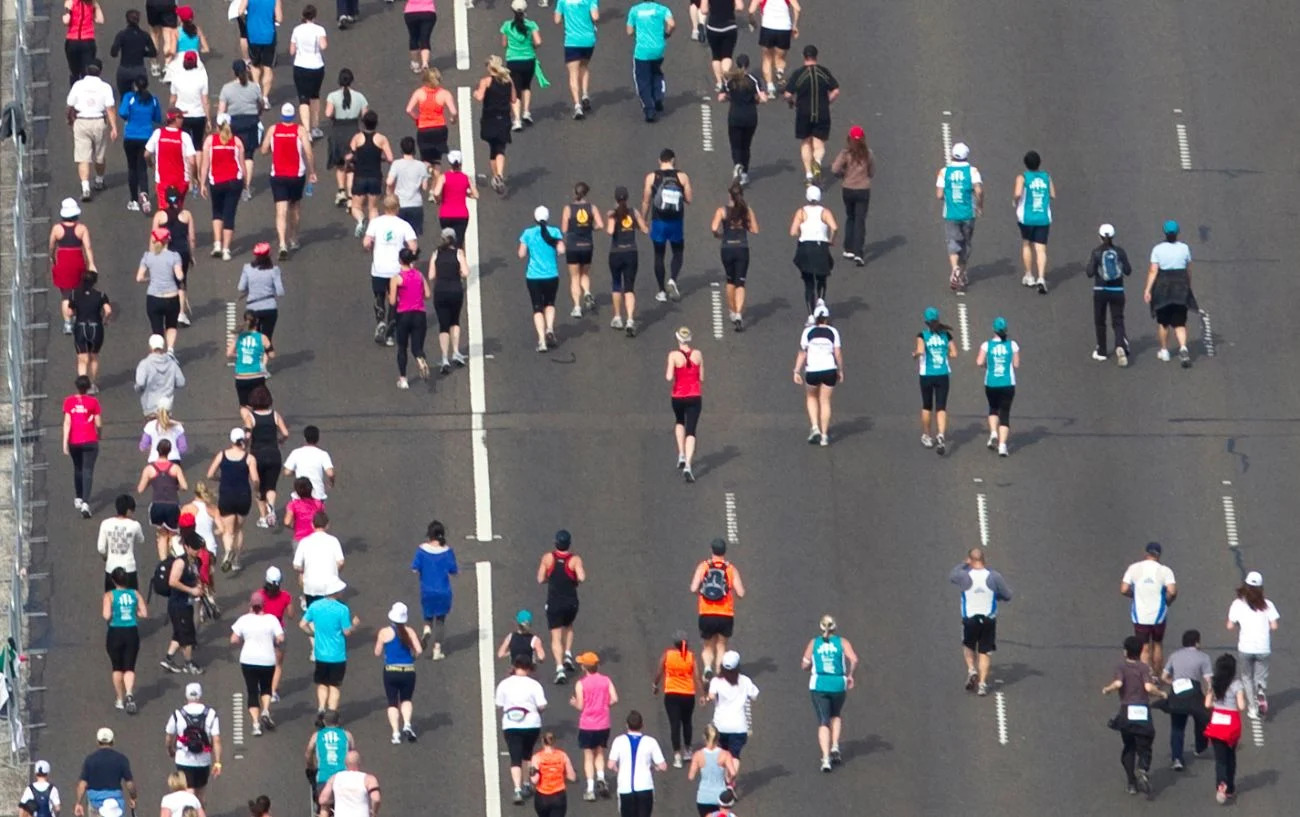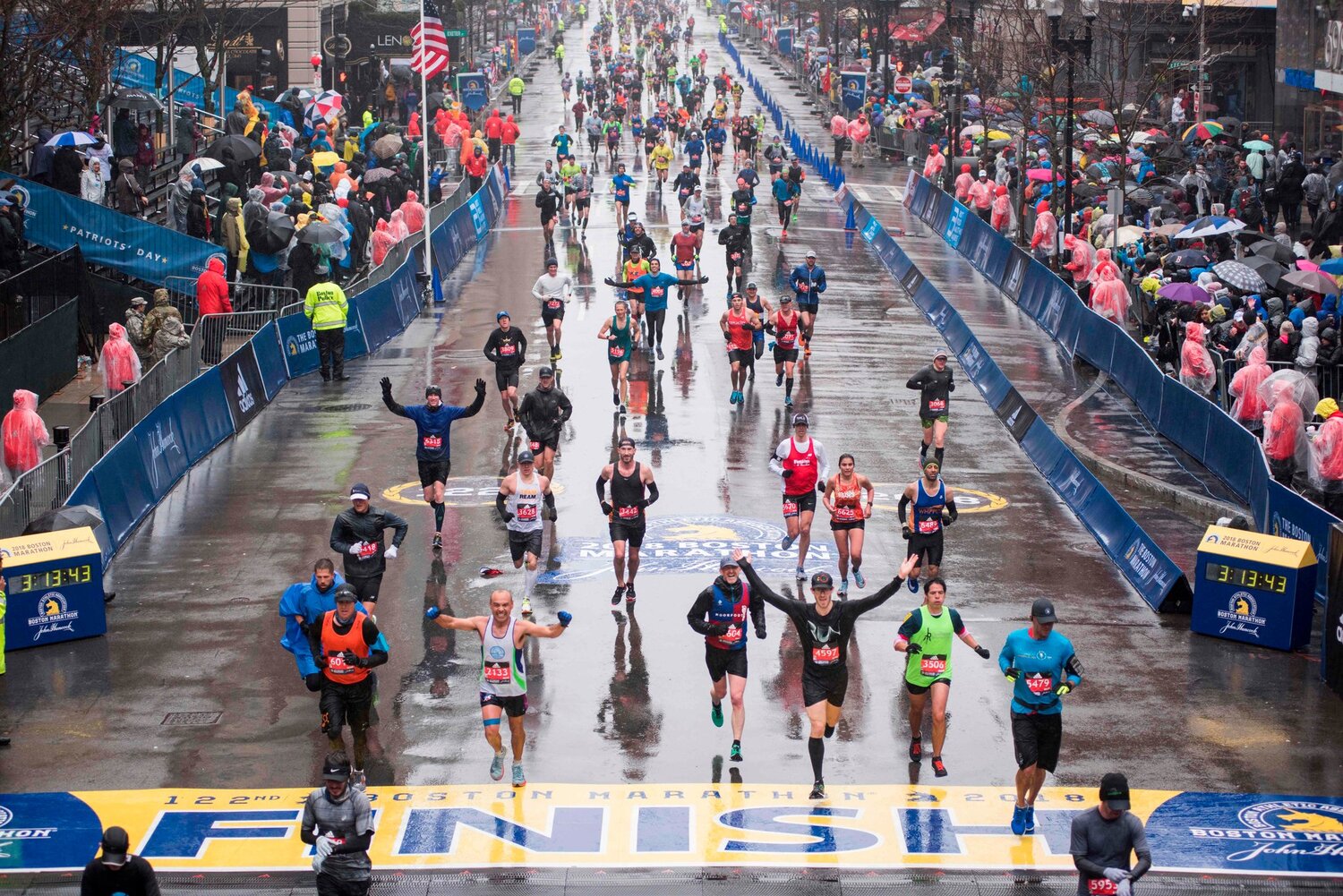

Featured
How Much Does A Full Marathon Cost
Modified: January 22, 2024
Discover the Featured Full Marathon Prices and Get Ready for an Incredible Running Challenge. Find Out How Much It Costs to Participate in a Full Marathon Today!
Introduction
Welcome to the exciting world of full marathons! If you’re a running enthusiast or someone looking for a new challenge, participating in a full marathon can be a truly rewarding experience. Not only do you get to push your physical limits and test your endurance, but you also become part of a vibrant community of passionate runners from around the world. But before you lace up your running shoes and hit the pavement, it’s essential to understand the cost associated with participating in a full marathon.
A full marathon is a race that covers a distance of 26.2 miles or 42.195 kilometers. It is the ultimate test of endurance and has gained immense popularity among both novice and professional runners. The sense of accomplishment upon crossing the finish line is truly unparalleled.
The origins of the full marathon date back to ancient Greece, where the legendary story of Pheidippides, a messenger who ran from the city of Marathon to Athens to deliver news of victory, inspired the creation of this long-distance race. In 1896, the first modern Olympic Games included the marathon as a separate event, and since then, it has become a staple in the athletic world.
Today, full marathons are organized all around the globe, attracting thousands of participants each year. Major cities like New York, London, Boston, Berlin, and Tokyo host some of the most prestigious and iconic marathons in the world. These races not only provide runners with a chance to showcase their skills but also offer a unique opportunity to explore the host city’s scenic routes and vibrant culture.
Now, let’s talk about the cost associated with participating in a full marathon. The price can vary depending on several factors. Entry fees, accommodation, travel expenses, and additional race day necessities all contribute to the overall cost. It’s important to take these factors into account when planning to participate in a marathon to ensure you budget accordingly.
In the following sections, we will delve deeper into each aspect of the cost associated with full marathons. From examining the average entry fees to exploring cost-effective options, we will provide you with a comprehensive understanding of what to expect when participating in this exhilarating and challenging race.
Definition of a Full Marathon
A full marathon, also known as a marathon race, is a long-distance running event that covers a distance of 26.2 miles or 42.195 kilometers. It is one of the most grueling endurance races in the sporting world, testing both physical and mental strength. The marathon has a rich history dating back to ancient Greece and has evolved into a globally recognized event that attracts participants from all walks of life.
Completing a full marathon requires months of dedicated training, discipline, and commitment. Runners must build up their endurance gradually, following a structured training program to prepare their bodies for the demanding distance. The race typically takes place on a road course, with participants running through various terrains, often including city streets, countryside routes, and iconic landmarks.
The full marathon distance of 26.2 miles was standardized in 1908 during the Olympic Games in London. The distance was extended to include the extra distance needed to start the race at Windsor Castle and finish in front of the royal box at the Olympic Stadium. The decision to adopt this distance globally was made during the 1921 International Amateur Athletic Federation (IAAF) Congress. Since then, the 42.195-kilometer marathon has become the official distance for all certified marathon races.
Organized marathons, whether they are local or international events, follow strict guidelines and regulations to ensure fairness and accuracy. The course must be accurately measured and certified by national federations or the IAAF to guarantee that the distance covered is in accordance with the official marathon standards. Additionally, races often have specific time limits for participants to complete the course to ensure a smooth operation and the safety of all participants.
While most full marathons are individual races, some events also offer relay options, allowing teams to split the distance among multiple runners. This team-based approach provides a unique opportunity for friends, colleagues, or family members to share the experience and support each other throughout the race.
Participating in a full marathon is not only a personal challenge but also an opportunity to engage in a vibrant running community. Runners of all ages and backgrounds come together to celebrate the determination and perseverance required to complete the race. The camaraderie and support experienced during a marathon can create lasting memories and inspire individuals to push their limits both on and off the running course.
History of Full Marathons
The history of full marathons can be traced back to ancient Greece, where the roots of this iconic race originated. The marathon has its origins in the legendary story of Pheidippides, a Greek soldier and messenger who, according to folklore, ran from the city of Marathon to Athens to deliver news of victory in the Battle of Marathon in 490 BCE. Pheidippides completed the arduous journey without stopping, covering a distance of approximately 26 miles.
While the story of Pheidippides may be the inspiration behind the marathon, it wasn’t until the revival of the modern Olympic Games in 1896 that the marathon race as we know it today took shape. The first modern Olympic marathon was held in Athens, Greece, and commemorated the legend of Pheidippides.
The course of the inaugural Olympic marathon covered a distance of approximately 24.85 miles, or 40 kilometers, from the town of Marathon to the Panathenaic Stadium in Athens. Spiridon Louis, a Greek water carrier, emerged as the victor, becoming the first Olympic marathon champion in history.
The International Association of Athletics Federations (IAAF) was established in 1912, with the goal of governing and promoting the sport of athletics, including marathons. In 1921, the IAAF officially established the standard distance for marathons as 42.195 kilometers, or 26.2 miles. This distance was adopted to ensure that marathon races could start and finish in front of the same audience, while also accounting for differences in measurement techniques at various race courses.
The Boston Marathon, one of the most prestigious and historic marathons, played a significant role in popularizing the sport in the United States. First held in 1897, the Boston Marathon is the oldest annual marathon in the world. It gained international attention in 1967 when Kathrine Switzer became the first woman to officially register and complete the race, challenging the prevailing belief at the time that women were not capable of running long distances.
Since then, full marathons have experienced a surge in popularity worldwide. Major cities around the globe, including London, New York, Berlin, Chicago, Boston, and Tokyo, now host annual marathons that attract elite runners and enthusiasts alike.
Marathons have also become a platform for charitable fundraising, with thousands of participants taking part in charity runs to support causes close to their hearts. From raising funds for medical research to advocating for social justice, marathons have become an avenue for individuals to make a positive impact in their communities.
Today, full marathons are celebrated as a testament to human endurance, determination, and resilience. They provide individuals with the opportunity to challenge themselves physically and mentally, and empower them to accomplish feats they may have once thought impossible. The history of full marathons serves as a reminder of the power of the human spirit and the boundless possibilities that lie within each of us.
Popular Full Marathons around the World
Full marathons have gained immense popularity globally, with avid runners and enthusiasts flocking to participate in iconic races held in some of the most exciting cities around the world. These marathons offer not only a challenging and rewarding experience but also a chance to explore new destinations. Here are some of the most renowned full marathons that attract participants from all corners of the globe:
- Boston Marathon, United States: Founded in 1897, the Boston Marathon is one of the oldest and most prestigious marathon races. Held annually on Patriots’ Day, the race follows a point-to-point course, starting in Hopkinton and finishing in Boston. It is known for its rigorous qualifying standards and iconic “Heartbreak Hill” section.
- London Marathon, United Kingdom: Established in 1981, the London Marathon is one of the six World Marathon Majors events. The race course passes through famous landmarks such as the Tower of London, the Houses of Parliament, and the iconic Tower Bridge. The event attracts professional athletes as well as charity runners from around the world.
- Berlin Marathon, Germany: Known for its fast and flat course, the Berlin Marathon is a favorite among elite runners aiming to set personal best times. The race route takes participants through the landmarks of Berlin, including the Brandenburg Gate and the Berlin Cathedral.
- Chicago Marathon, United States: With its flat and fast course, the Chicago Marathon is renowned for offering excellent opportunities for both beginners and seasoned runners to achieve personal records. Runners traverse the city’s neighborhoods, starting and finishing in Grant Park.
- Tokyo Marathon, Japan: Held in the vibrant capital city of Japan, the Tokyo Marathon attracts runners from around the world. Participants have the chance to experience the unique blend of traditional and modern culture as they run past iconic landmarks such as the Imperial Palace and Tokyo Tower.
- New York City Marathon, United States: As one of the largest marathons in the world, the New York City Marathon takes participants on a scenic tour through all five boroughs of the city. The race finishes in Central Park, and runners from diverse backgrounds come together to celebrate their accomplishments.
These marathons are just a glimpse of the countless full marathon events held worldwide. Whether it’s the beauty of the course, the history of the race, or the electric atmosphere, each marathon offers a unique experience that runners cherish for a lifetime. Participating in these renowned events allows runners to not only challenge themselves but also connect with a global community of passionate athletes, creating unforgettable memories and lasting friendships along the way.
Factors Affecting the Cost of a Full Marathon
Participating in a full marathon involves more than just the entry fee. There are several factors that can influence the overall cost of participating in a marathon. Understanding these factors is essential for budgeting and planning your marathon experience. Here, we explore the key factors that can affect the cost of a full marathon:
- Entry Fees: The entry fee is typically the primary cost associated with participating in a marathon. The price can vary significantly depending on the race, location, and prestige of the event. Major marathons, such as the Boston Marathon or London Marathon, tend to have higher entry fees compared to smaller, local races.
- Travel Expenses: If the marathon is held in a different city or country, travel expenses can significantly impact the overall cost. These expenses may include airfare or transportation costs, accommodation, meals, and local transportation within the host city.
- Accommodation: Depending on the race location and duration of your stay, accommodation costs can vary. Popular marathon destinations often have high-demand periods, leading to increased hotel rates. Consider options like hotels, hostels, or even home-sharing platforms to find more affordable accommodations.
- Training Costs: While not directly related to the marathon itself, it’s important to factor in the costs associated with training. This may include joining a gym, hiring a personal trainer, purchasing running gear, investing in proper running shoes, and any other training-related expenses.
- Race Day Essentials: On race day, there are additional costs to consider. This may include safety pins for attaching your race bib, energy gels or snacks, hydration products, running belts, and other accessories that aid in your race performance. These costs should be taken into account when planning for the marathon.
- Post-Race Celebrations: After completing the marathon, many runners like to celebrate their achievement. This may involve dining out, purchasing commemorative merchandise, or participating in post-race events organized by the race organizers. These costs can add up, so it’s essential to include them in your budget.
It is important to note that the costs mentioned above can vary based on individual preferences and circumstances. For example, some runners may choose to stay with friends or family instead of booking a hotel, or they may opt for cost-effective travel options like carpooling or public transportation.
Furthermore, race organizers often offer various registration tiers with different amenities and perks, which can impact the total cost. It’s crucial to carefully review the registration options and consider which features are essential for your marathon experience.
By considering these factors and conducting thorough research, you can estimate the total cost of participating in a full marathon and plan your budget accordingly. Evaluating and managing the associated expenses will ensure that you can fully enjoy the experience without any unexpected financial burdens.
Average Entry Fees for Full Marathons
When considering participating in a full marathon, it’s important to have an understanding of the average entry fees associated with these races. Entry fees can vary significantly depending on various factors, such as the race’s popularity, location, and prestige. Here, we provide an overview of the average entry fees you can expect for full marathons:
Local or smaller-scale marathons typically have lower entry fees, ranging anywhere from $50 to $150. These races are often organized by local running clubs or organizations and attract a smaller number of participants. While they may not have the same level of amenities, they offer a more intimate and community-based marathon experience.
Regional marathons, which cover a larger geographic area, tend to have higher entry fees. These races attract participants from a wider region and often have larger budgets for amenities and event organization. The average entry fees for regional marathons fall within the range of $100 to $200.
The most prestigious and internationally recognized marathons, such as the Boston Marathon or the London Marathon, have significantly higher entry fees. These races, which draw elite runners and have strict qualifying standards, can have entry fees exceeding $200. The entry fee for these marathons is often supplemented by the associated costs of travel and accommodation, as they attract runners from all over the world.
It’s important to note that these average entry fees are just a general guideline, and actual prices can vary from race to race. Additionally, early bird registration discounts, group rates, or charity spots may be available for some marathons, providing opportunities to secure lower entry fees.
It’s also worth considering that entry fees often include various benefits for runners. These may include an official race t-shirt or medal, access to aid stations along the course, professional timing and results, post-race refreshments, and a participant’s certificate. The amenities provided can vary between races, so it’s essential to review what is included in the entry fee when considering a specific marathon.
Moreover, many marathons use entry fees to support charitable causes or cover the costs of organizing the event. By participating in these races, runners contribute to the funding of the race, as well as to charitable organizations and causes that the marathon supports.
When deciding on a full marathon to participate in, it’s important to consider your budget, the race’s reputation and amenities, and the overall experience you are seeking. By researching entry fees and evaluating the value provided by different races, you can choose a marathon that aligns with your preferences and budget while still offering an unforgettable running experience.
Additional Costs to Consider
When planning to participate in a full marathon, it’s essential to consider the additional costs that may arise beyond the entry fee. While the entry fee covers the basics of race participation, there are other expenses to factor into your budget. Here, we outline some of the additional costs you should consider:
- Training Expenses: Proper training is essential for marathon preparation, and there may be costs associated with it. These expenses can include joining a gym or hiring a personal trainer to guide you through your training program. Additionally, investing in running gear like shoes, clothing, and accessories may be necessary to ensure comfort and prevent injuries.
- Travel and Accommodation: If you’re participating in a marathon in a different city or country, travel and accommodation expenses can significantly impact your overall budget. This includes airfare or transportation costs, hotel accommodations, meals, and local transportation within the host city. Researching and planning logistics in advance can help you find affordable travel and accommodation options.
- Meal and Nutrition: Proper nutrition is crucial during marathon training and on race day. This may require additional expenses for healthy food choices, supplements, and energy gels or bars. On race day, you may need to budget for pre-race meals and hydration during the race as well.
- Race-day essentials: On the day of the marathon, there are additional items you may need to purchase. Safety pins to attach your race bib, running belts or armbands for your phone or other essentials, and blister prevention products are some examples. It’s important to plan ahead and ensure you have everything you need for a smooth and comfortable race day experience.
- Race Merchandise: Many marathons offer official race merchandise, including t-shirts, hats, jackets, and commemorative items. While these purchases are optional, they can serve as a memento of your accomplishment. Consider whether you’d like to purchase any race merchandise and include it in your budget.
- Post-race Celebrations: After completing a full marathon, many runners like to celebrate their achievement. This might involve dining out at a restaurant or treating yourself to a massage or spa session. Additionally, socializing with other runners and participating in post-race festivities organized by the race organizers may have associated costs. Planning for these post-race celebrations can add to the overall experience of completing the marathon.
It’s important to note that the additional costs can vary depending on personal preferences and circumstances. Some runners may choose to find cost-effective options for training, travel, and accommodations, while others may opt for more luxurious experiences. It’s crucial to assess your own needs and priorities, and make decisions that align with your budget and goals.
By considering these additional costs and incorporating them into your overall marathon budget, you can ensure that you have a realistic plan in place. This will help you enjoy the marathon experience without any financial stress or surprises along the way.
Cost-Effective Options for Full Marathons
Participating in a full marathon doesn’t have to break the bank. There are several cost-effective options to consider that can help you stay within budget while still experiencing the thrill of completing a marathon. Here, we explore some ways to make your marathon journey more affordable:
- Choose Local or Regional Marathons: Local or regional marathons often have lower entry fees compared to larger, more popular races. These races offer a more intimate and community-driven experience while allowing you to save on registration costs.
- Plan Ahead and Take Advantage of Early Bird Registration: Many marathons offer early bird registration discounts for participants who register several months in advance. By planning your race schedule and signing up early, you can secure a lower entry fee and save money.
- Consider Charity Spots: Some marathons offer spots reserved for runners who commit to raising a certain amount of money for charity. In exchange for your fundraising efforts, you may receive a reduced or waived entry fee. This allows you to give back to a cause you care about while participating in the marathon at a lower cost.
- Opt for Affordable Accommodation: When traveling for a marathon, consider alternatives to traditional hotels, such as hostels, homestays, or sharing accommodations with other runners. These options can often be more cost-effective while still providing a comfortable place to rest and prepare for the race.
- Travel as a Group: Sharing travel expenses with fellow runners can significantly reduce costs. Consider coordinating with other participants from your area to share transportation, accommodation, and other expenses, creating a cost-effective and enjoyable group experience.
- Look for Travel Deals: Be on the lookout for discounts or deals on flights and transportation to the marathon location. Compare prices, sign up for fare alerts, and consider flexible travel dates to find the best travel options within your budget.
- Manage Training Costs: Training for a marathon can come with its own expenses. However, there are ways to keep costs in check. Utilize free outdoor running routes, join local running clubs or groups, borrow or buy second-hand gear, and explore online resources and apps for training tips and plans.
- Pack Your Own Race Day Essentials: Instead of buying race day essentials at the expo or on-site, prepare and pack your own supplies. Bring safety pins, energy gels, hydration products, and any other items you think you’ll need during the race. This can save you from potentially higher prices charged at the race venue.
Remember, the most important aspect of participating in a marathon is the experience itself, not the cost. Even with a limited budget, you can still have a fulfilling and memorable marathon journey by making smart choices and prioritizing what matters most to you.
By considering these cost-effective options, utilizing resources wisely, and planning ahead, you can enjoy the thrill of completing a full marathon without straining your finances. Embrace the challenges, celebrate your accomplishments, and savor the incredible journey of marathon running.
Conclusion
Participating in a full marathon is an exhilarating and fulfilling experience that challenges both the mind and body. It’s important, however, to understand the financial aspects involved in order to plan and budget effectively. From entry fees to travel expenses, training costs to race day essentials, and accommodations to post-race celebrations, there are various factors to consider when calculating the total cost of participating in a full marathon.
Throughout history, full marathons have captivated the hearts of people around the world. From the legendary story of Pheidippides to the modern Olympic Games and the countless races held in major cities, marathons have become a symbol of human endurance and perseverance.
Fortunately, there are ways to make participating in a marathon more financially feasible. By opting for local or regional races, taking advantage of early bird registration discounts, exploring cost-effective accommodation options, and considering charity spots, runners can still achieve their marathon goals without breaking the bank.
It’s essential to plan ahead, research race options, and consider all the associated costs. By doing so, runners can make informed decisions and create a realistic budget that aligns with their financial capabilities. Additionally, exploring cost-saving measures such as group travel, utilizing affordable training options, and being mindful of race day expenses can help runners stay within their budget while still enjoying the full marathon experience.
Ultimately, the value of participating in a full marathon extends far beyond the financial aspect. The sense of achievement, the personal growth, and the connections made within the running community are invaluable. Regardless of the cost involved, the memories, experiences, and personal achievements gained from participating in a full marathon will last a lifetime.
So, lace up your running shoes, set your goals, and embark on the incredible journey of a full marathon. With proper planning, a budget-conscious approach, and a passion for running, you’ll be well on your way to crossing that finish line and celebrating a remarkable achievement.

